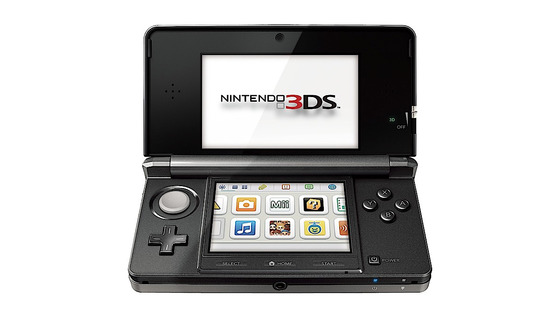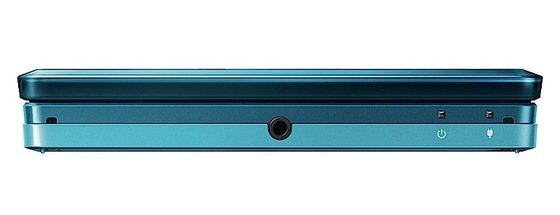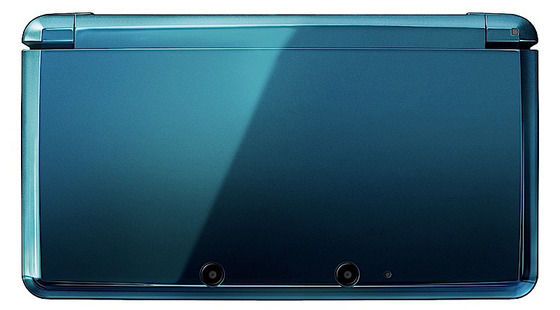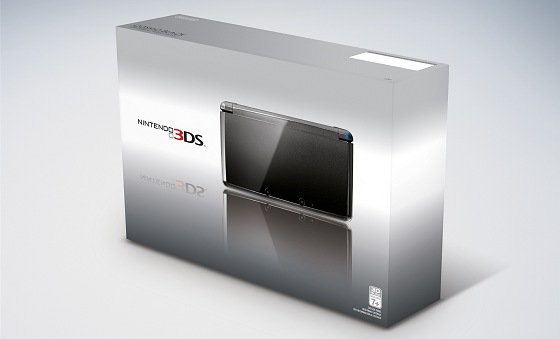 Written by contributing author John Rios
Written by contributing author John Rios
If there's one thing Nintendo is near untouchable at, it's portable gaming. Since 1989, Nintendo has virtually owned the portable handheld market, beginning with Game Boy. Technically superior competitors, such as the Atari Lynx and Sega Game Gear, could not overcome it. Nintendo followed up the original Game Boy with the Game Boy Color, later the Game Boy Advance and then finally the DS. Every time, these handheld devices stood in the face of the competition and prevailed. Does the 3DS continue Nintendo's streak of handheld dominance?
The Nintendo 3DS is true successor to the DS in every way. As you're probably aware, the 3DS is "3D without glasses". Don't make the mistake of thinking it's just the same DS hardware from 2004 with 3D tacked on. The 3DS is far more powerful, perhaps even more powerful than the Wii. It will ultimately go head-to-head with Sony's upcoming NGP, and will also stand against other rapidly rising gaming devices such as the iPad 2.
So, what has Nintendo learned since 2004? First, they've taken some major design cues from the DS Lite and DSi. The 3DS has almost exactly the same dimensions as the DSi, being slightly thicker and wider but shorter. However, it retains the glossy (read: fingerprint magnet) finish of the DS Lite. Much has been said about the 3DS's somewhat unusual build and "tri-color scheme," but frankly, I find it quite pleasant. The two launch colors, Aqua Blue and Cosmo Black, are exactly what it says on the box. The 3DS seems to be comprised of three layers: the top shell, the bottom shell and the battery case. The casings gradient lighter from top to bottom. Cosmo Black, for example, has a black top shell, a dark gray lower shell and a light gray battery case. It's an interesting effect, but it's rather controversial. Some love it, others hate it.
They have stuck with the tried-and-true design of the DS Lite and DSi, but what else has Nintendo learned? They understand that gamers want true analog control, even on a portable device. The 3DS adds an analog nub, often referred to as a "slide pad" or "circle pad". Finally, true analog control! Unfortunately, it's not backwards compatible. So, while you can use it to control all your old DS games, it will still be mapped to digital input. However, for 3DS games at least, there will be a level of precision that was never before possible on a Nintendo handheld.
You'll notice that in the paragraph above, I say "DS games" as opposed to "DS and GBA games". That's because, much like the DSi, the 3DS omits a Gameboy Advance cartridge slot, limiting the system to 3DS and DS games only. I really don't think this will affect most potential customers, but if you're a big GBA fan, it's something to keep in mind. Also note that playing DS games on the 3DS is very much like playing older Game Boy games on the GBA. You're going to either get pixelation (if you choose to have the resolution upscaled) or black bars (if you choose to have the native resolution kept.) As you might expect, playing older DS games on the 3DS is not the best graphical experience.
Other minor revisions to the hardware (when compared to the DSi) include the return of an analog volume slider. The power button has once again been moved, from the lower left to the lower right, where the Start and Select buttons once lurked. As for those latter buttons, they have now been relocated directly below the touch screen, where they appear to be touch-sensitive, but aren't. In between the two lies a new Home button, which I'll explain in further detail shortly.
Now you may be asking, "What is the 3D like?" I personally like it quite a bit. It uses autostereoscopy, which is a fancy way of saying you don't need special glasses or equipment to see the 3D. To borrow a line from Apple's marketing, "it just works." But the biggest problem is that everyone will see the 3D in a slightly different way. Some will easily see it, others will find it more difficult. Thus, it's hard to really describe what it looks like, it's really something you just have to see yourself. Personally, I had very little difficulty seeing the 3D effect at its finest. I just dialed the slider all the way up, found the effect was a little too strong, dialed it down about halfway and found it just right.
Yes, the 3DS includes a slider that lets you control precisely the amount of 3D you want. You can have it disabled entirely and get a flat image, or you can crank it all the way up and get a very strong 3D effect. As I noted above, I think the max setting is actually going to be a bit too strong for most people. Somewhere just below will probably be ideal. Note that the 3D changes dynamically as you adjust the slider. You don't need to pause the game, turn your unit off or anything like that. Just adjust it, and you'll find your eyes will re-adjust almost instantly. It's really a very neat effect, and games that are developed to take full advantage of the 3D are going to be quite impressive. I'd love to spend more time talking about the 3D, but as I stated, it's really difficult to explain. Since it doesn't require glasses or you crossing your eyes, it's hard to compare it to a 3D movie screen or a 3D television or even a Magic Eye picture.
3D is everywhere on this new portable, including the firmware. Similar to the firmware seen on the DSi and Wii, the 3DS allows for hot-swappable game switching. It also includes a few system tools, such as a clock, calendar and some built-in games based on augmented reality (AR) cards. If you've used a DSi or Wii, this firmware will feel very familiar to you. Nintendo will be providing constant updates for the 3DS, and a major update coming in May will be adding a web browser and a Virtual Console service that will let the 3DS emulate older Game Boy and Game Boy Color games.

The 3DS features not just one, but three cameras. The system will let you take 3D pictures, but they are only viewable on the 3DS itself. The cameras are a very poor 0.3 MP, so they won't exactly be providing anything close to excellent image quality. I think this is probably the worst feature on the 3DS. It's 2011, there is no excuse for such a poor-quality camera. No, I'm not expecting 12+ megapixels, but I don't think a minimum of 2 megapixels would have been so much to ask for. I suppose the camera's main purpose is for AR use, which it is perfectly fine for, but aspiring photographers should prepare to be disappointed.
Another poor point of the 3DS the battery life. At best, it's only rated around 5 hours. This is less battery life than even some notebook computers. The battery life is especially disappointing when you consider that Nintendo doesn't even want you to turn the system off, as it advertises such features as StreetPass, which is designed to let multiple 3DS units link up via wireless as you walk around. The 3DS will demand daily charging, especially for those who will be keeping it in constant sleep mode. Fortunately, Nintendo included a charging cradle that at first glance might appear to be based on inductive charging, but it's not. Just drop the 3DS onto the cradle and it begins charging. Sexy.
Perhaps the best improvement between the DS and the 3DS is the new system-wide Friend Code. Previously, every DS game used its own unique Friend Code. Thankfully, those days are a thing of the past. The 3DS has one Friend Code unique to system that will be used by all 3DS games. That means you only need to share one code with someone and you're set to play whichever games you'd like. Although it's not as nice as having a more intimate gamer tag, it's certainly a great improvement over the old system.
At $249, the 3DS is by far Nintendo's most expensive handheld system ever, and even rivals the initial price points of the Nintendo 64 and Wii. But there is some seriously powerful hardware inside the this thing, and future system updates and games should be pushing that hardware to the limit. The price point will probably be the most prohibitive reason for those who choose not to buy the system.
Conclusion
Overall, the 3DS is truly Nintendo's next-generation handheld and an extremely worthy successor to the DS, just as Game Boy Color improved upon the original Game Boy and the Game Boy Advance improved upon the Game Boy Color. With the 3DS, Nintendo has retained all the benefits of the DS platform while fixing some of the issues people had with the previous DS models. Though the hardware is currently limited to the few titles that have been launched with the system, I would recommend the Nintendo 3DS to anyone who enjoys handheld gaming, as the future potential for the system is almost limitless.
Buy it if: You're an early adopter, or must have cutting edge tech
Don't buy it if: You're patient enough to wait for the inevitable 3DS Slim in a year and a half